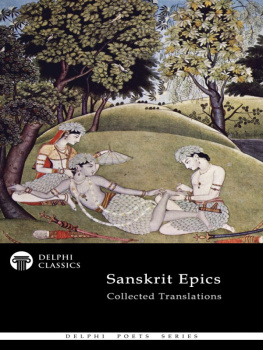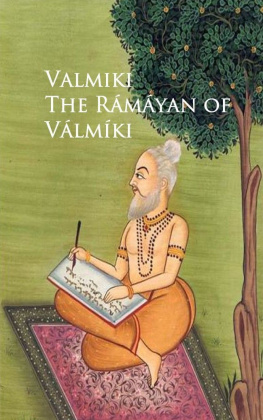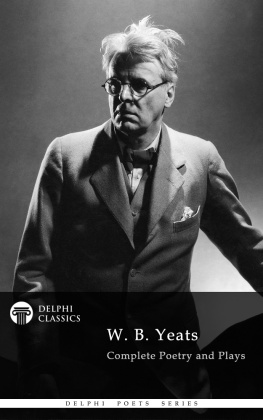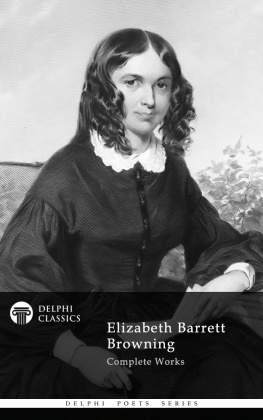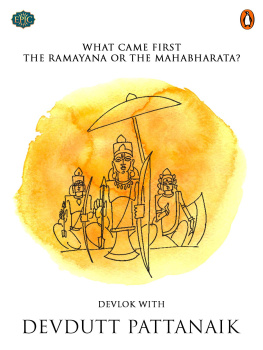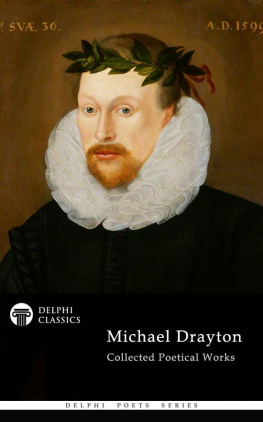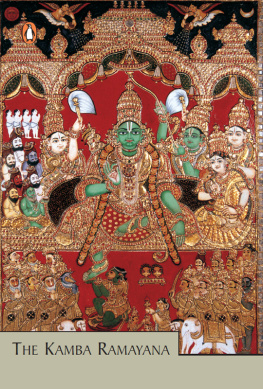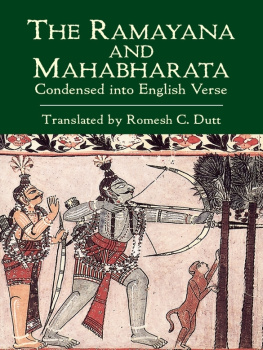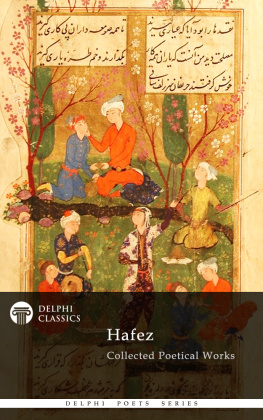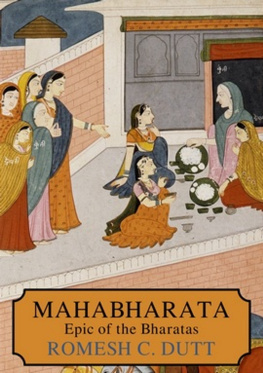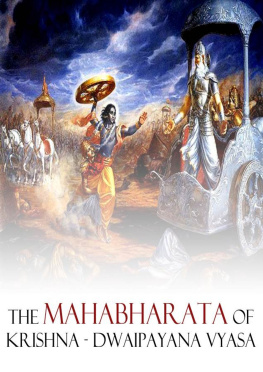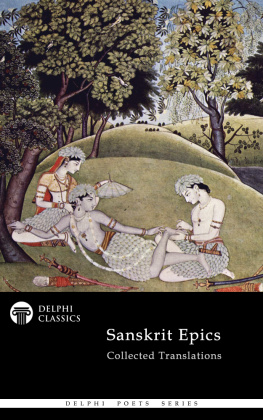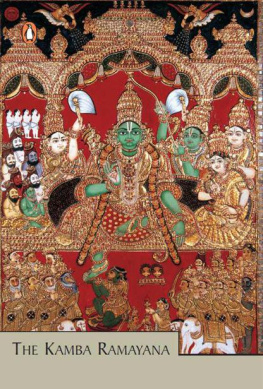
The Sanskrit Epics
(c. 1500 BC-AD 1000)

Contents

Delphi Classics 2018
Version 1


The Sanskrit Epics

By Delphi Classics, 2018
COPYRIGHT
The Sanskrit Epics - Delphi Poets Series

First published in the United Kingdom in 2018 by Delphi Classics.
Delphi Classics, 2018.
All rights reserved. No part of this publication may be reproduced, stored in a retrieval system, or transmitted, in any form or by any means, without the prior permission in writing of the publisher, nor be otherwise circulated in any form other than that in which it is published.
ISBN: 978 1 78656 128 2
Delphi Classics
is an imprint of
Delphi Publishing Ltd
Hastings, East Sussex
United Kingdom
Contact: sales@delphiclassics.com

www.delphiclassics.com
NOTE

When reading poetry on an eReader, it is advisable to use a small font size and landscape mode, which will allow the lines of poetry to display correctly.
The Hindu Itihasa

Yamuna River , near Kalpi, a town and a municipal board in Jalaun district in the Indian state of Uttar Pradesh according to Vishnu Purana, Vyasa , the composer of Mahabharata was born on an island by Kalpi.
Ramayana by Valmiki

Translated by Ralph Thomas Hotchkin
Sanskrit literature is a large body of works produced by the Aryan peoples that entered the Indian subcontinent from the northwest, probably during the second millennium BC. It developed as the vehicle of expression for the Brahmanical society, gradually establishing itself as the main cultural force throughout the region in the period before the Muslim conquest. Throughout this period of 2,500 years the dating of most literary works is difficult due to the tendency to ascribe authorship to well-known or legendary names. The two main periods in the development of Sanskrit literature are the Vedic period, approximately 1500200 BC and the classical period, approximately 500 BCAD 1000.
The epic poem Ramayana narrates the struggle of the divine prince Rama to rescue his wife Sita from the demon king Ravana. Along with the Mahabharata , it forms the Hindu Itihasa , the most revered series of Hindu scriptures and texts in Sanskrit literature. The classical Indian poets usually derived the story of their poetry and drama from the Itihasas. Traditionally ascribed to the Hindu sage Valmiki, Ramayana is one of the largest ancient epics in world literature, consisting of nearly 24,000 verses (mostly set in the Shloka meter), divided into seven Kandas (books) and about 500 sargas (chapters). In Hindu tradition, it is considered to be the adi-kavya (first poem). It depicts the duties of relationships, portraying model characters, such as the ideal father, the ideal servant, the ideal brother, the ideal wife and the ideal king. The epic was an important influence on later Sanskrit poetry and Hindu life and culture. Like Mahabharata , it is not just a story, but presents the teachings of ancient Hindu sages in narrative allegory, interspersing philosophical and ethical elements.
The epic narrates the birth of the god Rama in the kingdom of Ayodhya, his tutelage under the sage Vishvamitra and his success in bending Shivas mighty bow at the bridegroom tournament of Sita, the daughter of King Janaka, therefore winning her for his wife. When Rama is banished from his position as heir to the kingdom, he retreats to the forest with his wife and his favourite half brother, Lakshmana, to spend fourteen years in exile.
Ravana, the demon-king of Lanka, captures Sita, taking her to his capital, while her two protectors are pursuing a golden deer sent to mislead them. Sita resolutely rejects Ravanas attentions and Rama and his brother set out to rescue her. After numerous adventures, they forge an alliance with Sugriva, king of the monkeys, and, with the assistance of the monkey-general Hanuman and Ravanas own brother, Vibhishana, they attack Lanka. Rama slays Ravana and rescues Sita, who undergoes an ordeal by fire in order to clear herself of infidelity. When they return to Ayodhya, however, Rama learns that the people still question the queens chastity and he banishes her to the forest. There she meets the sage Valmiki (the poems author) and at his hermitage gives birth to Ramas two sons. The family is reunited when the sons come of age, but Sita, after again protesting her innocence, plunges into the earth, her mother, who receives her and swallows her up.
By tradition, the text belongs to the Treta Yuga, second of the four eons of Hindu chronology. Rama is said to have been born in the Treta yuga to king Dasharatha in the Ikshvaku dynasty. There is no consensus regarding the date the epic poem was first composed, though it is generally held to be no later than 300 BC. It enjoys enormous popularity in India, where its recitation is considered an act of great merit. Little is known of the poet Valmiki as a historical figure, though he is described as having been a thief named Ratnakara, before becoming a sage. The Ramayana was popular during the Mughal period (sixteenth century) and it was a favourite subject of Rajasthani and Pahari painters of the seventeenth and eighteenth centuries. The epic also spread in various forms throughout Southeast Asia in Cambodia, Indonesia and Thailand. The heroes, together with the Pandava brothers of the Mahabharata , were also the heroes of traditional Javanese-Balinese theatre, dance and shadow plays.
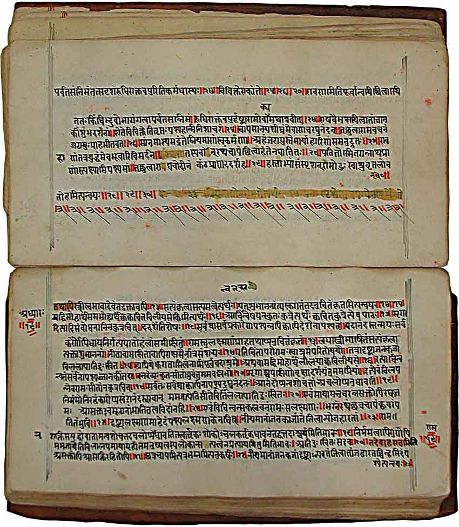
Eighteenth century manuscript of the epic poem
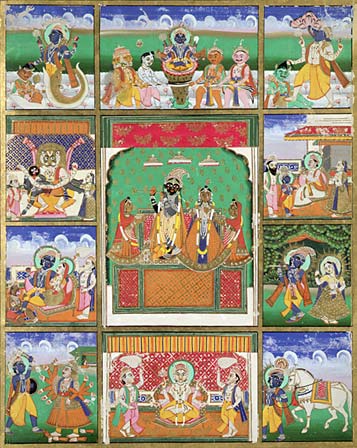
Rama (left third from top) depicted in the Dashavatara, the ten avatars of Vishnu. Painting from Jaipur, now at the Victoria and Albert Museum
CONTENTS
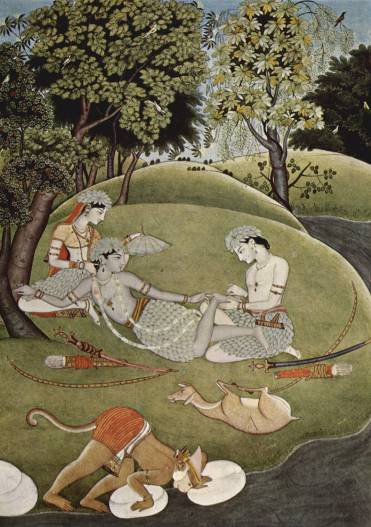
Next page
